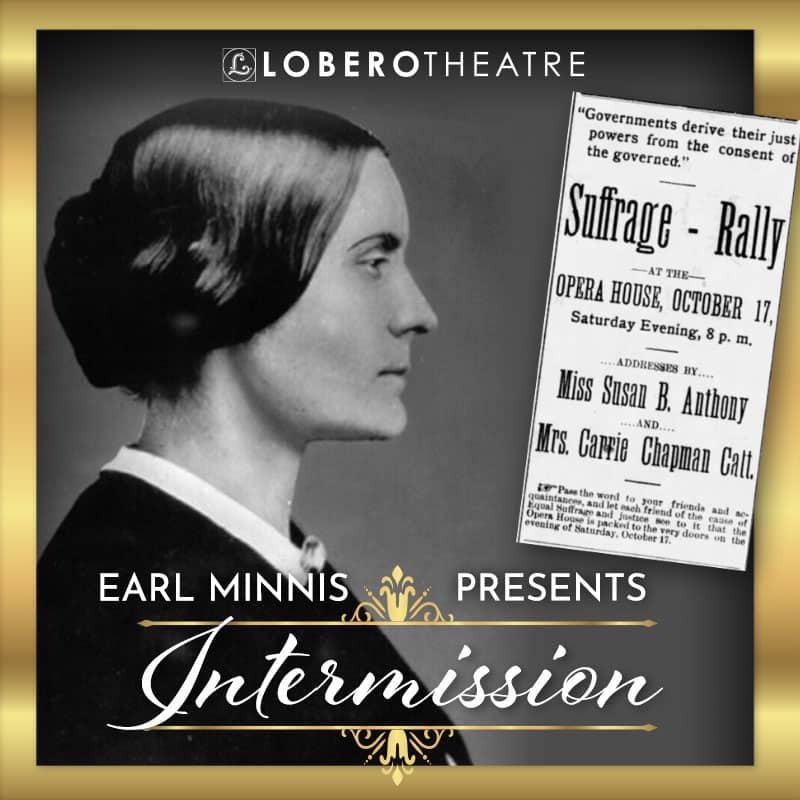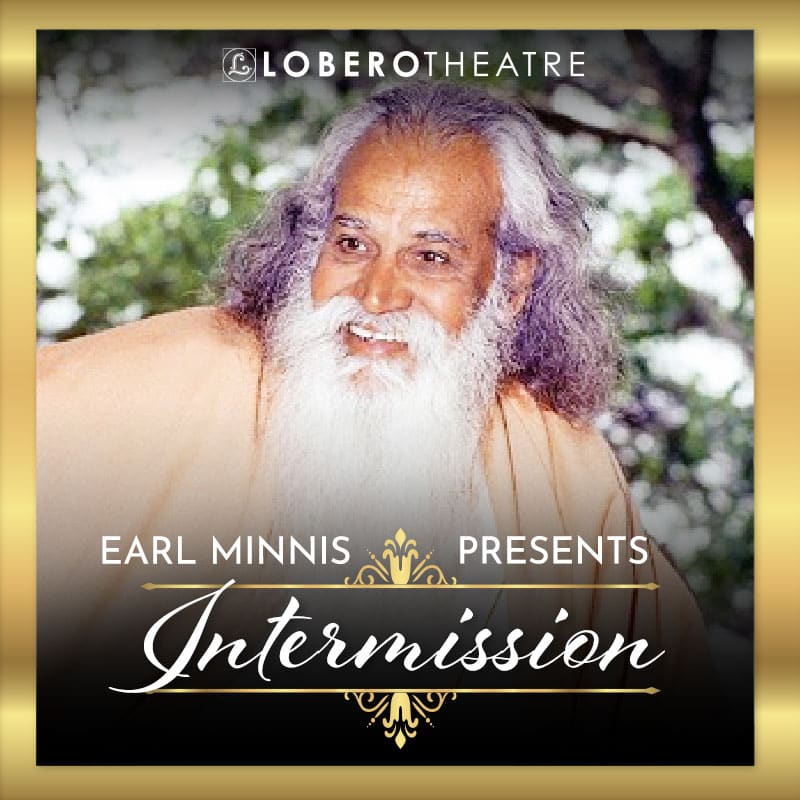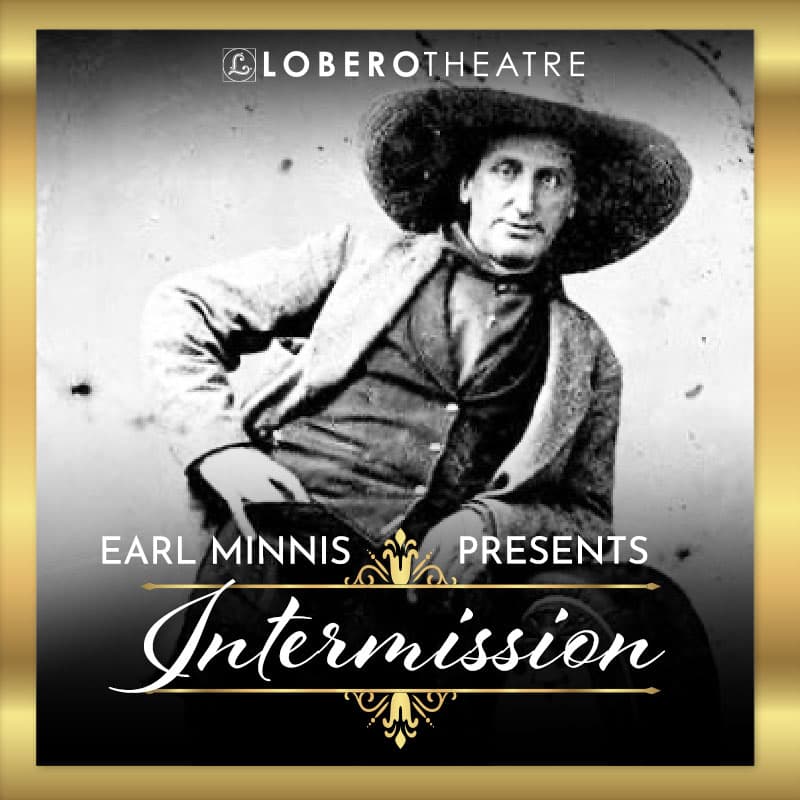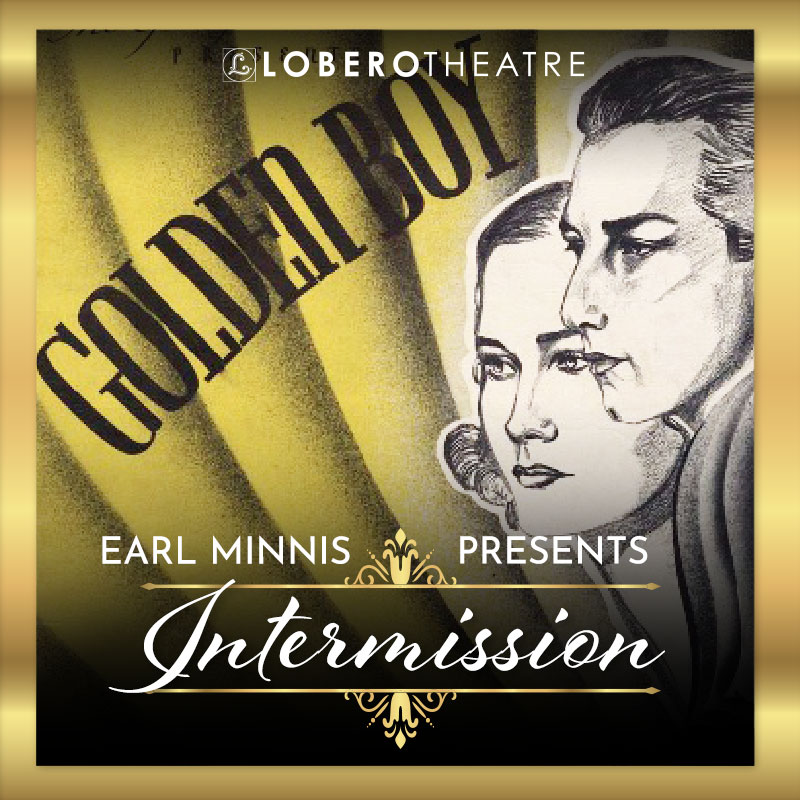On Saturday, October 17, 1896, the Lobero Opera House’s 1300 seats were filled – and hundreds were turned away at the door – when women’s rights activist Susan B. Anthony came to Santa Barbara to speak.
Anthony was in Santa Barbara to urge voters to support California Amendment 6, which would allow women the right to vote. “You have given her all the other rights under the law. You have educated her. And yet you deny her the right to respect herself and to command the respect of others. Women must have the ballot to fight the battles in the field of labor!” Anthony declared. The raucous audience replied with “We will! We will!”, and Anthony replied, “Good for you. I knew Santa Barbara was going to give us equal suffrage. The head under the bonnet should be made under the law as good as the bald head.”
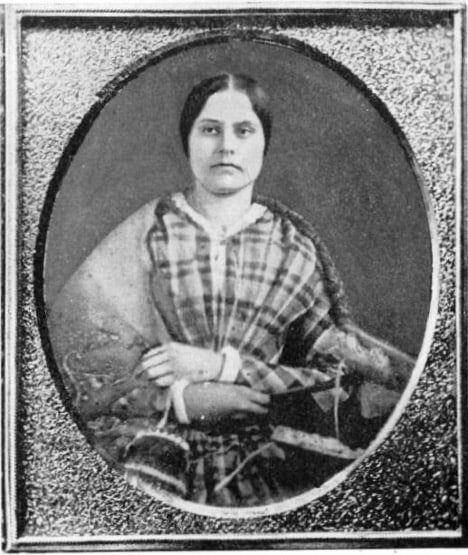
Susan B. Anthony was born in Massachusetts in 1820 to a Quaker family who was strongly anti-slavery. In 1851 Anthony met Elizabeth Cady Stanton and the two first created a temperance society (the movement to outlaw the production and sale of alcohol), and then founded the American Equal Rights Association, which campaigned for equal rights for both women and African Americans.
In 1872, Anthony was arrested for voting in her hometown of Rochester, New York – a violation of state law which only allowed men to vote. After a widely publicized trial in which the judge told the jury to find Anthony guilty, Anthony was convicted and fined $100. The guilty verdict, and Anthony’s refusal to pay the fine helped make women’s suffrage a national issue.
From the 1890s to the 1910s, the Lobero Theatre was an important venue for the women’s suffrage movement in California. Lectures and rallies promoting women’s right to vote were regular features on the theatre’s schedule and often overlapped with temperance gatherings. Lobero suffrage rallies were sometimes bilingual.
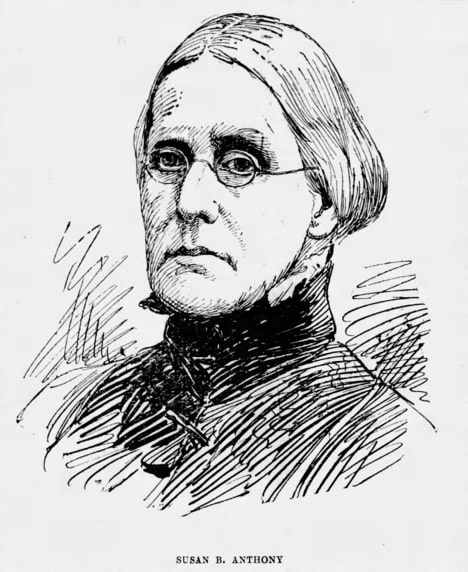
Susan B. Anthony’s visit to the Lobero in 1896 came just two weeks before California voters cast ballots to decide if women would be allowed to vote in the state. Between 1867 and August 18, 1920 – the final passage of the 19th Amendment which gave women the right to vote – 54 ballot measures to grant women’s suffrage were on the ballot in 30 states. California’s Women’s Suffrage Amendment in 1896 was considered important enough that Susan B. Anthony spent 8 months in the state on the campaign and spoke in 30 cities.
Her Santa Barbara visit was the social and civic event of the year, and received glowing coverage by the liberal Santa Barbara Daily Independent,
“Susan B. Anthony, sometimes spoken of as a sour old maid by those who never saw her, is a sweet-faced, lovely, earnest woman who in all of her seventy-odd years of life…has never been heard to utter one harsh or cutting word concerning those opposing her. She stands today loved and honored by every intelligent man and woman on the continent.”
“Never has Santa Barbara seen an audience to equal the one gathered Saturday last, to greet a plain, silver-haired woman – the new woman – alert, alive, and well poised. To those who sat on the stage and could view the amphitheater of faces, reaching to the very ceiling of the opera house…the memory is one to last as long as life.”
Interestingly, Anthony’s support for Amendment 6 was not enough to bring about its passage. While the amendment was supported by Santa Barbara voters, statewide, women’s suffrage was soundly defeated 55% to 44%. California women would not be able to vote for another 24 years – until 1920.
Sources
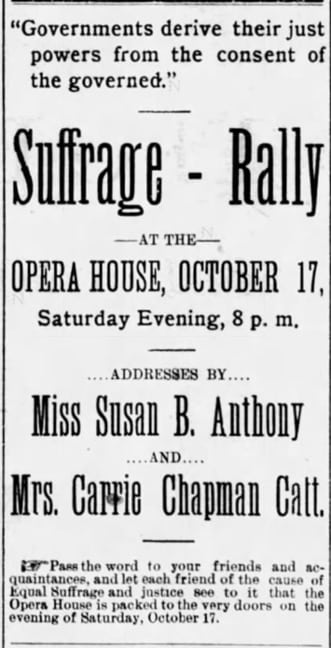
- https://en.wikipedia.org/wiki/Susan_B._Anthony
- https://www.independent.com/2020/03/04/starshine-reflects-on-the-womens-suffrage-centennial/
- https://www.womenshistory.org/education-resources/biographies/susan-b-anthony
